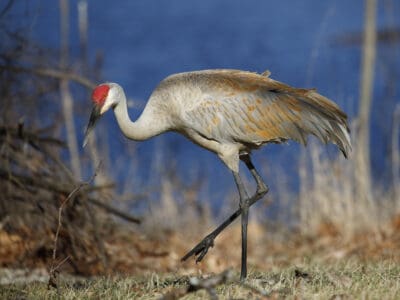Forests, mountains, deserts, and rivers can all be seen in the state of New Mexico. In terms of wildlife, there are 169 mammal species, 110 reptile species, 27 amphibian species, and 542 species of birds in the state.
Some of the most common wild animals living in this state are black bears, bullsnakes, desert cottontails, elk, chaparral birds, bighorn sheep, and rattlesnakes.
Official Animals
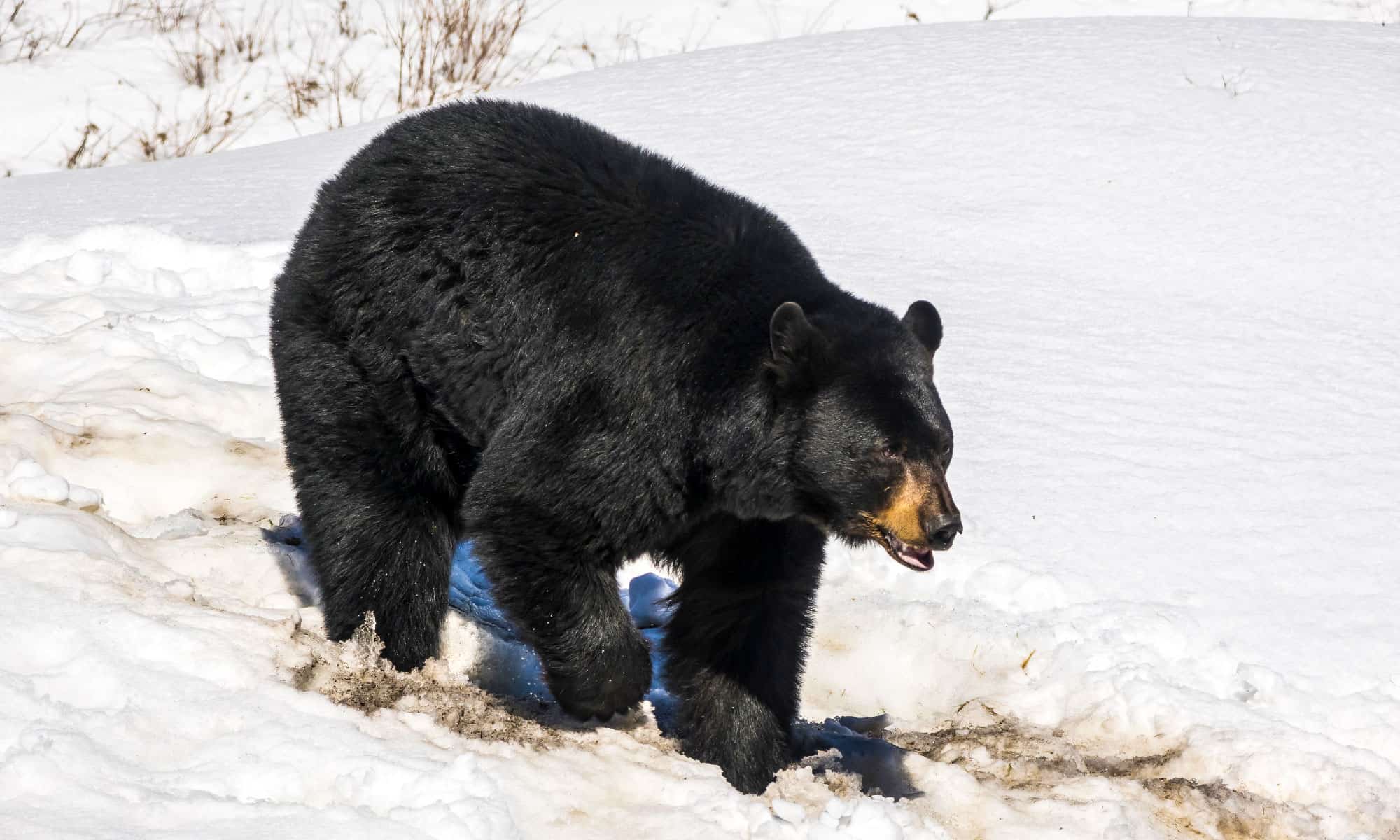
The Black Bear is the official state mammal of New Mexico.
©Josef Pittner/Shutterstock.com
New Mexico has chosen a number of animals as state symbols:
State fossil – The coelophysis
State insect – The tarantula hawk wasp, scientifically known as Pepsis formosa
State butterfly – The Sandia hairstreak
State reptile – The New Mexico whiptail lizard, scientifically known as Cnemidophorus neomexicanus
State amphibian – The New Mexico spadefoot toad, scientifically known as Spea multiplicata
Information on the state mammal, bird, and fish is given in detail below.
Official State Mammal: Black Bear
The New Mexico black bear (Ursus americanus amblyceps) is a subspecies of the American black bear. It became New Mexico’s state animal in 1963. A black bear’s face appears on the logo of New Mexico’s Department of Game and Fish.
Although it’s known as a black bear, the New Mexico black bear doesn’t always have black fur. This bear can have fur that’s brown, reddish, and even cinnamon in color. These bears are a protected species. However, they are hunted in a regulated way in certain parts of the state during a specified hunting season. These mammals live in mountain forests.
Official State Bird: Chaparral Bird
The chaparral bird (Geococcyx californianus) was made the official bird of New Mexico in 1949. These birds, also called roadrunners, are abundant in the deserts and on the plains of the state.
Of course, they are famous outside of New Mexico as well. The Roadrunner character in the Bugs Bunny cartoon is based on these strange chaparral birds running around in New Mexico. If you see this bird fly more than a short distance you’ve witnessed one of the rarest sights in the state. This bird prefers to run. Can you blame it? The chaparral bird’s claim to fame is its deer-like ability to run at speeds of up to 26mph.
Official Fish: Rio Grande Cutthroat Trout
The Rio Grande cutthroat trout (Oncorhynchus clarki virginalis) became the official fish of the state in 1955. This fish has greenish-brown scales with dark spots near its tail fin. It was named for the bright orange or red splash of color under its jaw. They live in lakes and streams located at high elevations in the state.
Where to Find the Top Wild Animals

A mule deer buck can be seen commonly in New Mexico.
©iStock.com/twildlife
The desert is one of the most interesting places to find wildlife in New Mexico. Deserts are home to hardy wild animals like mountain lions, mule deer, prairie dogs, peccaries, and rattlesnakes. These animals along with many others have the ability to endure the desert’s blazing hot temperatures during the day and the freezing temperatures at night.
Check out the forests in the mountains of New Mexico and you may see elk, deer, ticks, black bears, turkeys, and maybe even hawks soaring above looking for rodents, insects, and toads.
Someone visiting one of the many rivers in New Mexico has the chance to witness a lot of intriguing wildlife in and near it. Eagles, dusky grouse, elk, snapping turtles, beavers and belted kingfishers are all animals living near New Mexico rivers. Cutthroat trout, largemouth bass, and green throat darters as well as longnose gar are all common river inhabitants.
Some areas in New Mexico where you can see wildlife include:
- Wildlife West Nature Park
- Valles Caldera Nature Preserve
- Bitter Lake National Wildlife Refuge
- Cibola National Forest
- Sevilletta National Wildlife Refuge
- White Sands National Park
- Bosque del Apache National Wildlife Refuge
- Maxwell National Wildlife Refuge
Zoos
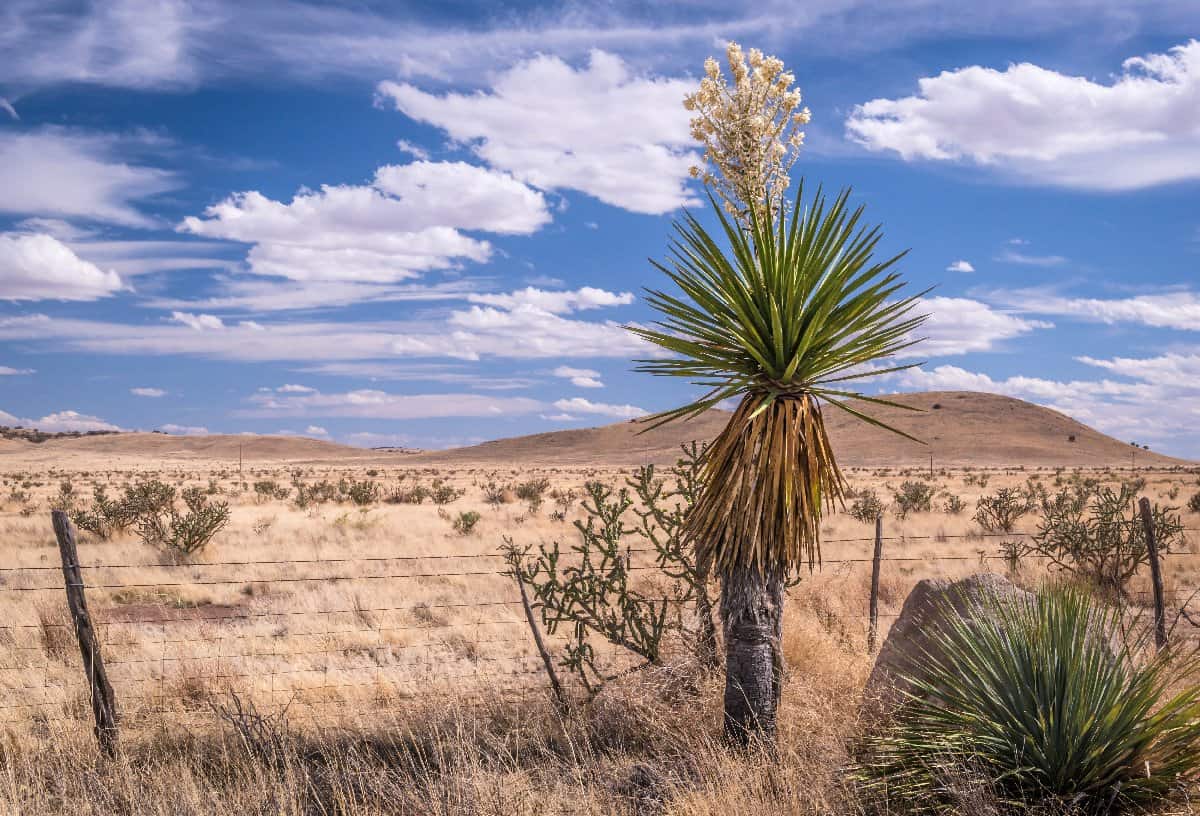
The plants and animals from the Chihuahua Desert are featured at the Living Desert Zoo and Gardens in Carlsbad, New Mexico.
©John A Davis/Shutterstock.com
The zoos in New Mexico give visitors the opportunity to learn more about native animals and wildlife from other places. Zoos operating in the Land of Enchantment state include:
- Albuquerque Biopark Zoo includes an Africa exhibit area, an Australia exhibit area, the “Cat Walk” and herpetology area
- Albuquerque Biopark Aquarium is next to the Biopark Botanical Gardens
- Alameda Park Zoo in Alamogordo
- Hillcrest Park Zoo in Clovis
- New Mexico Wildlife Center in Espanola
- Living Desert Zoo and Gardens in Carlsbad showcasing plants and animals from the Chihuahua Desert
Dangerous Animals

Western coral snakes are native to New Mexico.
©Nathan A Shepard/Shutterstock.com
New Mexico is home to many strange and beautiful animals. Some of those wild animals could be considered dangerous. Check out a few examples of the most dangerous animals in New Mexico.
Coral snakes are native to New Mexico. They live in the southwestern portion of the state. An adult coral snake’s body can be 11 to 20 inches long. It displays thick rings of red and black scales separated by thin rings of yellow or white scales. Oftentimes, the similar-looking, non-poisonous milk snake is mistaken for a coral snake. Though the coral snake is considered a small species compared to others in the state, it is highly venomous. In 1960, an antivenom was created for people bitten by this snake. Since that time, there have been no recorded deaths in North America from its bite. However, if not treated, this snake’s bite causes paralysis, stomach pain, headache and/or convulsions.
Despite its name, the Arizona bark scorpion is another dangerous wild animal living in New Mexico. This strange, predatory creature is venomous and notable for its two long pinchers and curled tail featuring a stinger at its tip. The bark scorpion has a habit of seeking shelter in homes with air conditioning to get away from the hot New Mexico sun! They are active at night. This creates the opportunity for a human to accidently step on or touch a bark scorpion hiding in their home. The scorpion stings as a way to protect itself. Their venom is especially dangerous to young children and older people. Though death from its sting is the rarest outcome, this creature’s sting is very painful. There have been two recorded deaths from scorpion stings since 1960.
Several species of rattlesnake are common around New Mexico. The Mojave rattlesnake is particularly dangerous due to its strong poison. The Mojave rattlesnake’s venom is neurotoxic and hemotoxic which means its poison attacks the heart, brain, and blood. You can imagine how powerful its venom is on rodents along with other prey. Only two people have died from a Mojave rattlesnake’s bite since 1960. Fortunately, looking at this statistic, it seems that death is the rarest outcome for someone bitten by this reptile.
Other rattlesnakes of concern are the Western Diamondback, the Prairie rattlesnake and the massasauga. This last snake resides in burrows of other creatures. It rarely rattles and prefers staying still to avoid detection. In this species, the males often fight to breed with a female. The conservation status of the massasauga varies by area, but they are facing habitat loss.
Apache brown recluse spiders also number among the most dangerous animals native to New Mexico. These common spiders are venomous and live in the desert beneath rocks, logs, and dead vegetation. They sometimes venture close to people’s homes hiding in woodpiles or sheds.
A bite from this spider usually happens when a human reaches into a woodpile or other area where this weird animal is hidden. Once again, kids and elderly people are most vulnerable to this spider’s toxin. Since 2000, there has been one death from the bite of a brown spider. There are medical treatments available to stop or lessen the effects of its venom. Similarly, the black widow spider is of particular concern in New Mexico. It is interesting and helpful to know that only the females of this species have venom, and they carry a large amount!
Endangered Animals

The
leopard
frog is currently listed as Vulnerable for extinction in New Mexico.
©Jason Patrick Ross/Shutterstock.com
There are currently 118 species listed as threatened or endangered in New Mexico. The list of Endangered animals in New Mexico includes the following:
- Rio Grande Silvery minnow – The population of this fish is currently unknown. It’s listed as Endangered because its habitat is disappearing due to dam creation and other structures that divert river water. In addition, it has fallen victim to predatory fish, frogs, and other animals in its habitat.
- White-sided Jackrabbit (Vulnerable) – White-sided Jackrabbits are decreasing in number because they are competing with other wildlife for food. Poaching activity is another threat to these mammals.
- Chiricahua leopard frog (Vulnerable) – The population of this frog has been affected by lower water levels that prevent them from reproducing in great numbers. Also, predatory fish and crayfish have contributed to lessening this frog’s population.
- Bendire’s thrasher (Vulnerable) – The population of this bird is falling because of habitat loss as a result of land development and expansion of farmland. Furthermore, this bird is in competition with others for the food supply in their habitat.
- In 2022, the New Mexico Department of Game and Fish listed the following mammals as being endangerd: Arizona shrew, Mexican long-nosed bat, (Penasco) least chipmunk, meadow jumping mouse, (Arizona) montane vole, and the gray wolf. In some areas, the gray wolf is listed as being of “Least Concern,” so what may be lost in one area could be surviving well elsewhere.
Rarest Animals

This Roundtail Chub is a close relative of the Gila Chub, and both are endangered
The roundtail chub and the Gila Chub are closely-related species of ray-finned fish in the family Cyprinidae, and they are losing their habitat. They once lived in the slow-moving pools of water created by beaver dams. Now there are no more beaver dams thanks to habitat destruction and water diversion, but there is predation from non-native fish and bullfrogs. The chub is struggling for survival in the very few compatible areas that are left to it. In fact, the Gila Chub may not be in New Mexico anymore but is of concern to Arizona conservationists. The rountail chub is on the New Mexico Fish and Wildlife list of endangered species.
Largest Animals
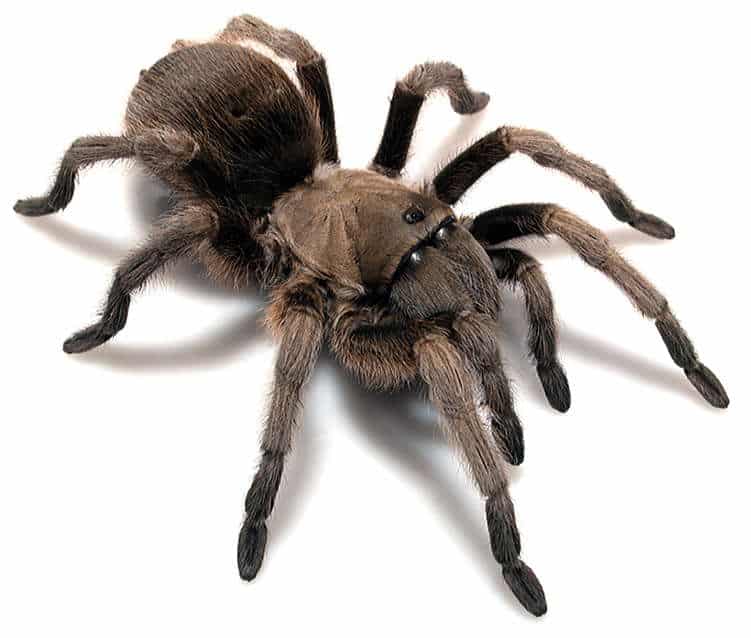
The Chiricahuan grey tarantula can measure up to six inches long, so at that length, it ties for largest spider in New Mexico.
©Chris A. Hamilton, Brent E. Hendrixson, Jason E. Bond / Creative Commons – Original / License
For a description of the largest of each of six categories of animals, click here. In short, the largest mammal in New Mexico is the American bison; the largest bird is the bald eagle; the largest snake is the Western Diamondback; the largest fish is the Flathead Catfish; the largest insect is the Tarantula Hawk Wasp; and the two largest spiders are the Chiricauan Grey Tarantula and the Caroliina Wolf Spider.
Native Plants
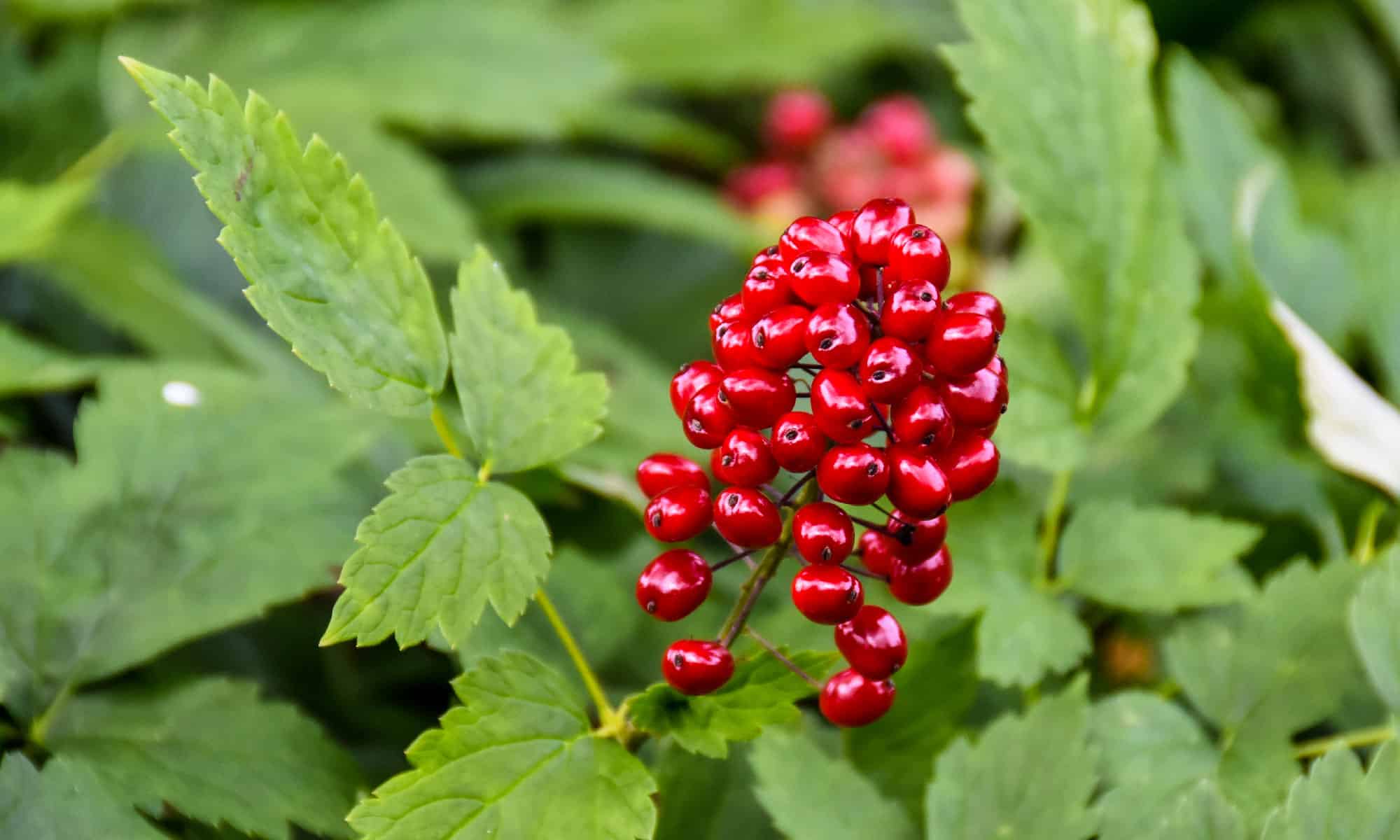
Banebery is native to New Mexico and poisonous.
©HHelene/Shutterstock.com
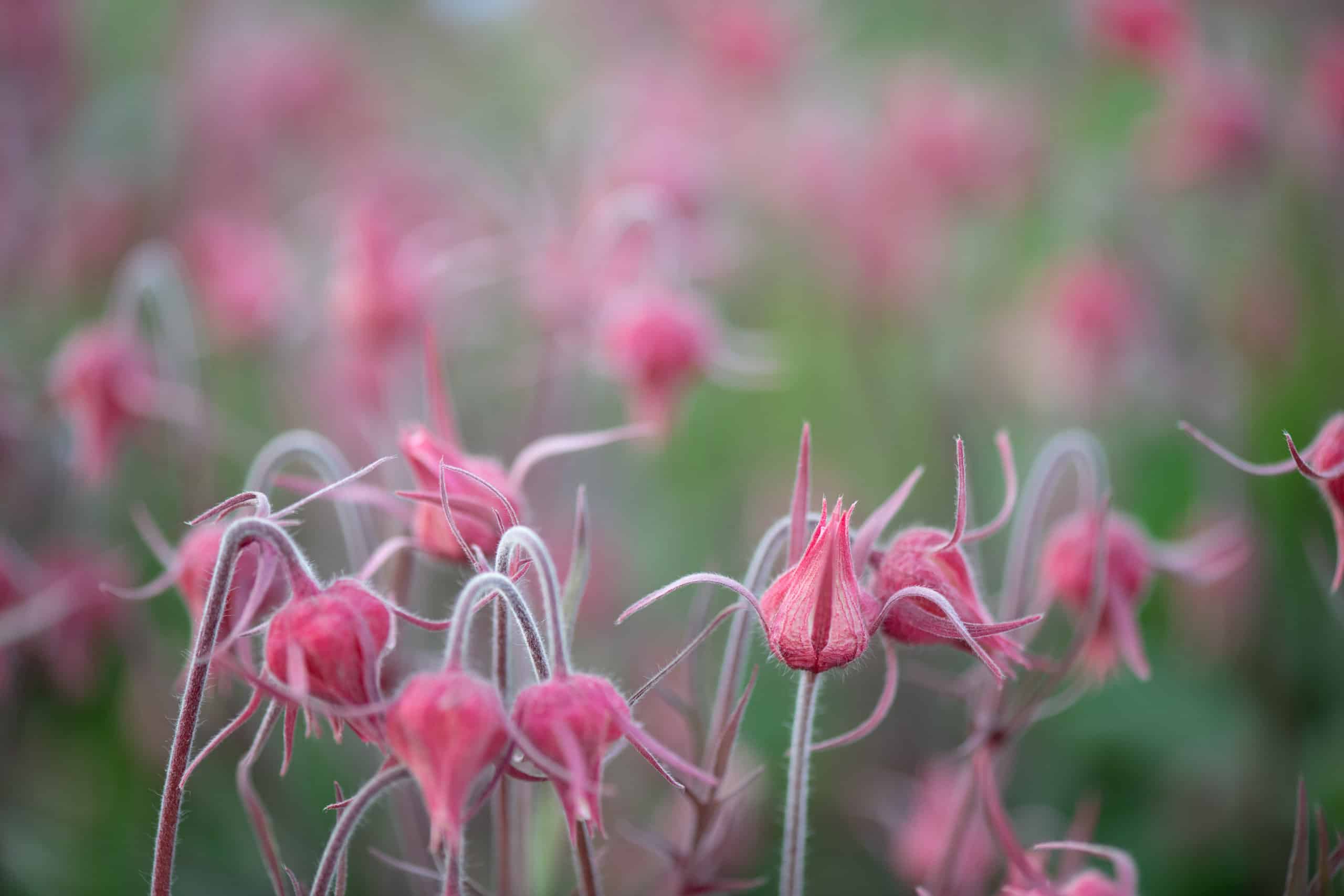
Prairie smoke is a beautiful perennial wildflower that is found in New Mexico
©iStock.com/Page Light Studios
The state of New Mexico consists of highly varied geographical and climate elements. One can find deserts and forested mountains in the state, making it a haven for flora and fauna enjoyers because there are so many different plants that are native to New Mexico.
Some native plants in New Mexico include Pacific anemone, Indian hemp. swamp milkweed, red baneberry, big sagebrush, white prairie clover, prairie smoke, creosote bush, mesquite, and dropseeds.
There are also many trees native to New Mexico which include evergreens such as Engelman spruce, ponderosa pine, Rocky Mountain juniper as well as deciduous trees like the Gamble oak, Netleaf hackberry, bigtooth maple and more.
There are dozens of wildflowers native to New Mexico. Among them are the white sand and snowball verbenas, the common yarrow, angel’s trumpets, Spanish clover, bird’s foot trefoit, foothill and Greene’s deerweed, and the desert rock pea.
More Articles Related to New Mexico
Read about:
- extinct animals that lived in New Mexico.
- the best national parks in New Mexico.
- the best fishing spots in New Mexico.
- the best camping spots in New Mexico.
- the best fish to catch in New Mexico in the summer.
New Mexican Animals

Admiral Butterfly
Stunningly beautiful wings
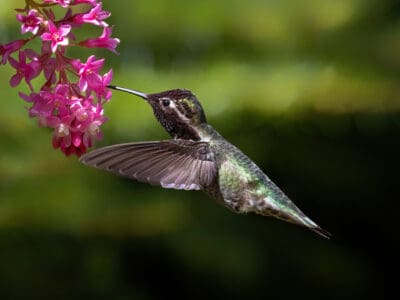
Anna’s Hummingbird
Anna's Hummingbird wings beat 40-50 times per second during normal flight
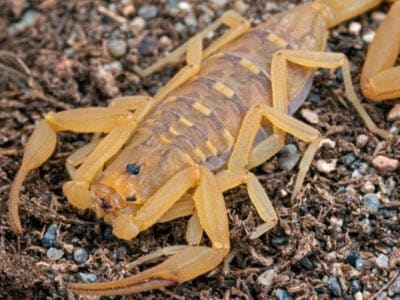
Arizona Bark Scorpion
Under UV light they glow a bright blue or green, making them easy to spot.

Arizona Black Rattlesnake
Female Arizona black rattlesnakes sometimes share parenting duties.

Arizona Blonde Tarantula
They are covered in thousands of fuzzy blonde hairs.

Arizona Coral Snake
The Arizona coral snake is among the most venomous snakes of North America.

Beewolf wasp
They hunt bees
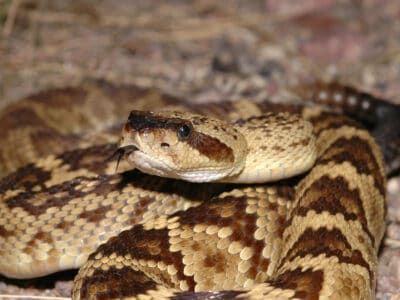
Black-Tailed Rattlesnake
One of the most beautiful rattlesnakes, they have solid black tails.
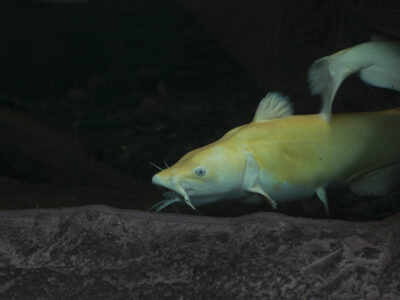
Blue Catfish
It's a strong fighter when caught on a fishing line

Burrowing Owl
The burrowing owl lives in underground burrows

Cactus Mouse
In hot temperatures, they lower their metabolism and become inactive to reduce the amount of water they need to survive

Cactus Wren
It is the largest wren in the United States
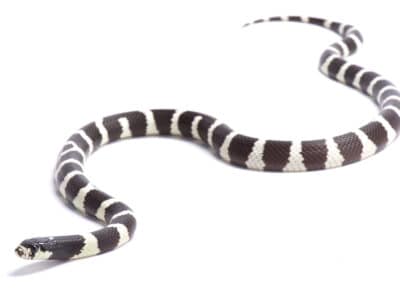
California Kingsnake
A full-grown California kingsnake can be about 3.5 feet long, though there are some cases in Mexico of the snake being almost twice this size.
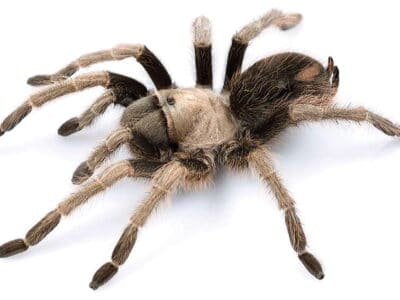
California Tarantula
They can go for months without eating!
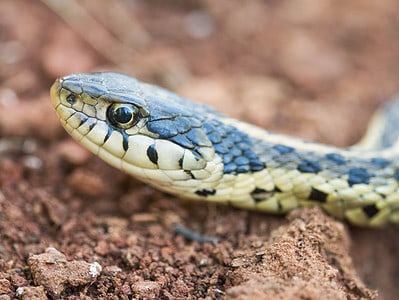
Checkered Garter Snake
It has the ability to expel a stinky liquid from its body as a way to make predators (and humans) retreat!

Cinnamon Bear
A newborn cinnamon bear weighs 1/2 pound -- about the same as a large apple.

Common Yellowthroat
The Common Yellowthroat stays close to the ground and uses stealth to survive!

Coues Deer
Coues deer are smaller than other white-tail deer, following Bergmann's Rule that average size is greater for animals farther from the equator.
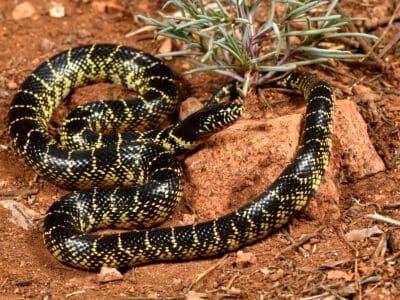
Desert Kingsnake
The desert kingsnake rolls over and plays dead when it feels threatened.

Diplodocus
Their long tales could have been used as a whip!
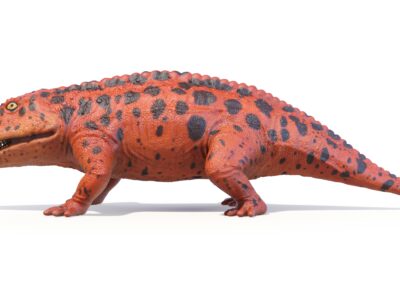
Eryops
Unlike modern amphibians, Eryops had a well-developed rib cage

Flea
Adult fleas can jump up to 7 inches in the air
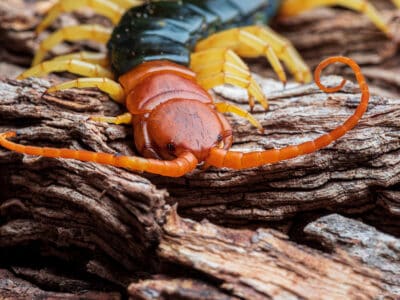
Giant Desert Centipede
They are the largest centipede in North America
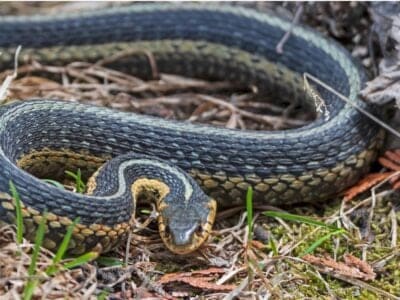
Grass Snake
Use acute hearing to hunt

Harris’s Hawk
Their vision is eight times better than a human's

Jackrabbit
They can run as fast as 45 mph.
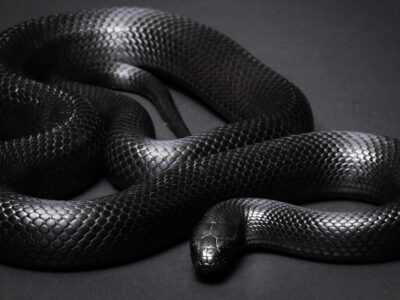
King Snake
King Snakes eat other types of snakes.
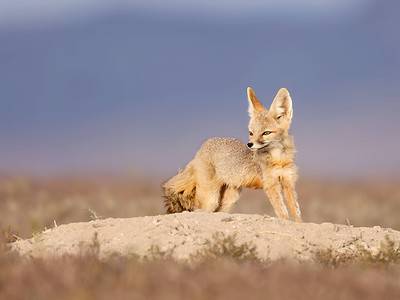
Kit Fox
The kit fox is the smallest canid in North America.
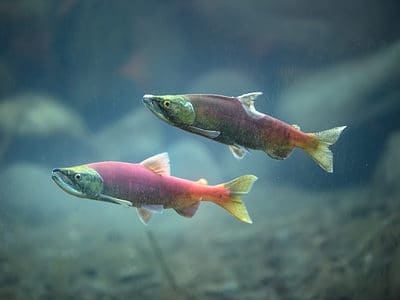
Kokanee Salmon
A non-anadromous type of sockeye salmon

MacGillivray’s Warbler
The complicated story of how MacGillivray’s Warblers got their name involves three ornithologists, a physician and a compromise.

Massasauga
The name “Massasauga” comes from the Chippewa language, meaning “Great River Mouth”.

Mealybug
They have a symbiotic relationship with ants.

Mockingbird
Mockingbirds are incredible mimics that can learn hundreds of songs!
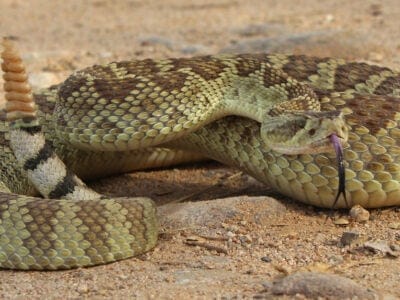
Mojave Rattlesnake
"The Mojave rattlesnake is the most venomous rattlesnake in the world."

Nematode
Nematodes range in size from 1/10 of an inch to 28 feet long

Orb Weaver
Females are about four times the size of males
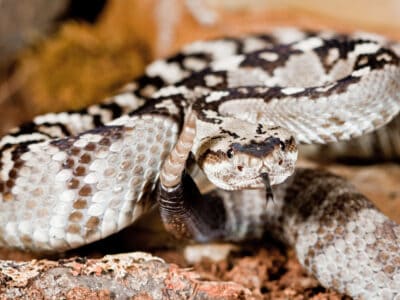
Ornate Black-Tailed Rattlesnake
Ornate black-tailed rattlesnake mothers stay with their newborn babies for up to a month.

Owl
The owl can rotate its head some 270 degrees
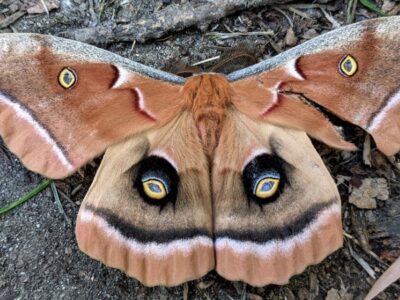
Polyphemus Moth
The Polyphemus moth doesn’t and can't eat, except when it's a caterpillar!
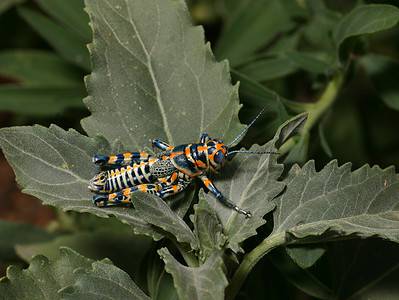
Rainbow Grasshopper (Dactylotum bicolor)
They have strikingly bright colors

Rat Snakes
Rat snakes are constrictors from the Colubridae family of snakes.

Rooster
Will mate with the entire flock!
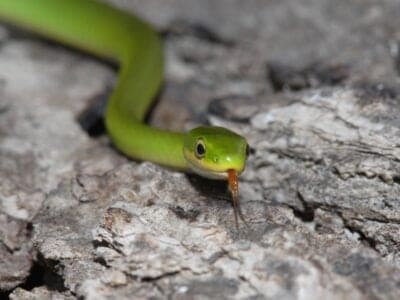
Rough Green Snake
Rough green snakes are great pet snakes because they're low-maintenance.

Smallmouth Bass
A fierce fighter!

Smokybrown Cockroach
Has up to 45 eggs per egg case
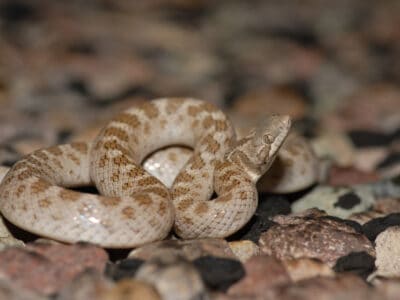
Texas Night Snake
The Texas night snake has vertical pupils to help it see better at night.

Tree Cricket
They make music with their wings

Western Diamondback Rattlesnake
They replace their fangs 2-4 times per year!
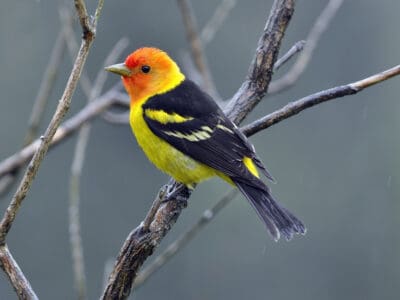
Western Tanager
They migrate farther north than any other tanager.

Whiptail Lizard
Many whiptail species reproduce asexually.
New Mexican Animals List
- Admiral Butterfly
- Anna’s Hummingbird
- Arizona Bark Scorpion
- Arizona Black Rattlesnake
- Arizona Blonde Tarantula
- Arizona Coral Snake
- Beewolf wasp
- Black-Tailed Rattlesnake
- Blue Catfish
- Burrowing Owl
- Cactus Mouse
- Cactus Wren
- California Kingsnake
- California Tarantula
- Checkered Garter Snake
- Cinnamon Bear
- Common Yellowthroat
- Coues Deer
- Desert Kingsnake
- Diplodocus
- Dire Wolf
- Eryops
- Flea
- Giant Desert Centipede
- Grass Snake
- Harris’s Hawk
- Jackrabbit
- King Snake
- Kit Fox
- Kokanee Salmon
- MacGillivray’s Warbler
- Massasauga
- Mealybug
- Milk Snake
- Mockingbird
- Mojave Rattlesnake
- Nematode
- Orb Weaver
- Ornate Black-Tailed Rattlesnake
- Owl
- Polyphemus Moth
- Rainbow Grasshopper (Dactylotum bicolor)
- Rat Snakes
- Rooster
- Rough Green Snake
- Sandhill Crane
- Smallmouth Bass
- Smokybrown Cockroach
- Swallowtail Butterfly
- Texas Night Snake
- Tree Cricket
- Western Diamondback Rattlesnake
- Western Tanager
- Whiptail Lizard
- Yellowish Cuckoo Bumblebee (formerly Fernald’s Cuckoo Bumblebee)
Animals in New Mexico FAQs (Frequently Asked Questions)
What big animals are in New Mexico?
Black bears, mountain lions, and the predatory Mexican wolf are a few of the biggest animals living in the state of New Mexico.
Some of the biggest animals with horns include bighorn sheep and deer. Also, with horns curving upward and a deer-like body, the pronghorn antelope is another notable desert dweller.
What dangerous animals are in New Mexico?
The most dangerous animals in the state are venomous. The Mojave rattlesnake, coral snake, Apache brown recluse spider, and scorpion are all on the list.
What kinds of animals live in the New Mexico desert?
The desert habitat of New Mexico is home to a lot of incredible and even weird types of wildlife. Some desert inhabitants include Mexican wolves, mountain lions, kit foxes, and Coahuilan box turtles. Some rodents thriving in the desert include black-tailed prairie dogs, desert pocket gophers, and Merriam’s pocket mouse.
The chaparral bird with its deer-like talent for running the dusty roads lives in the desert along with the scaled quail and the burrowing owl.
A few mammals with horns found in the desert in New Mexico include pronghorns, bighorn sheep, and desert mule deer. And don’t forget the weird, yet interesting round-tail horned lizard!
What are some of the best campsites near Albuquerque?
There are a number of great camping spots near Albuquerque. These include the Cochiti Recreation Area, Turquoise Trail Campgrounds, and Villanueva State Park.





